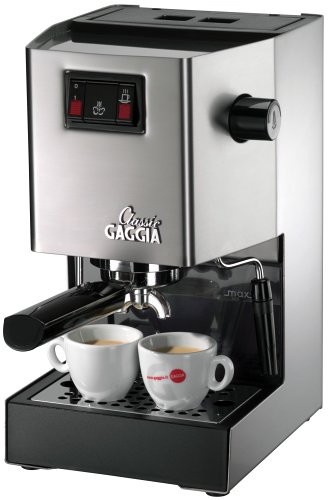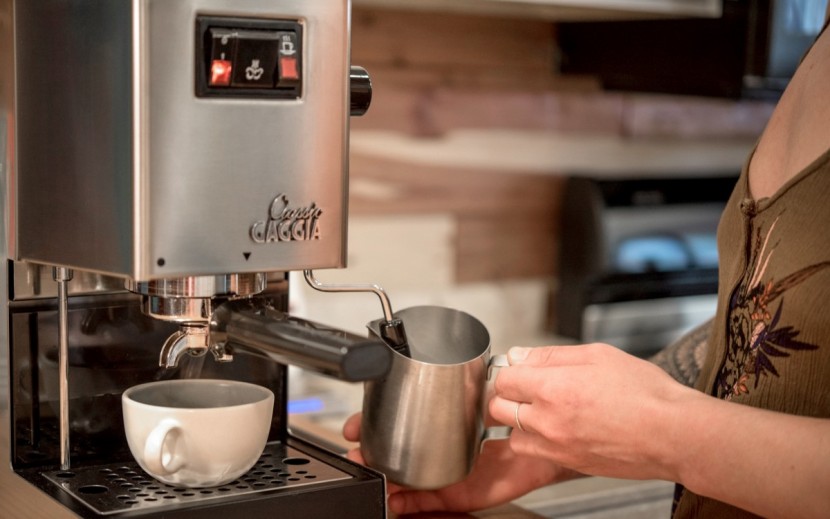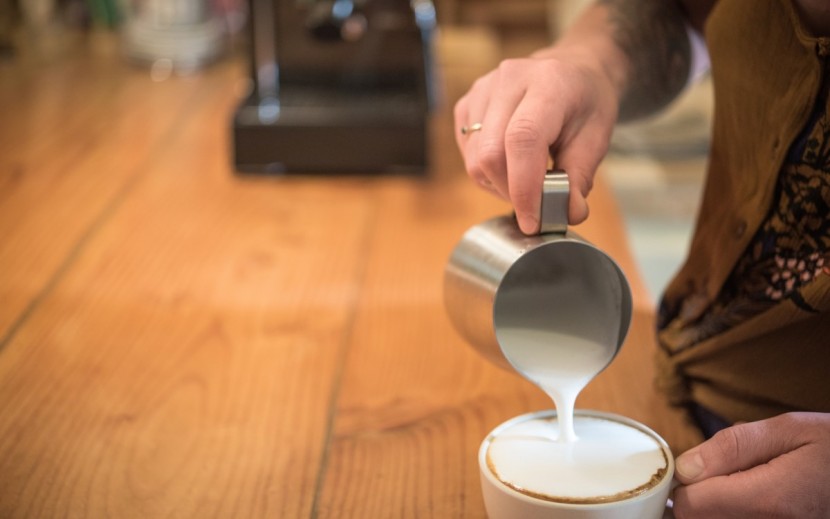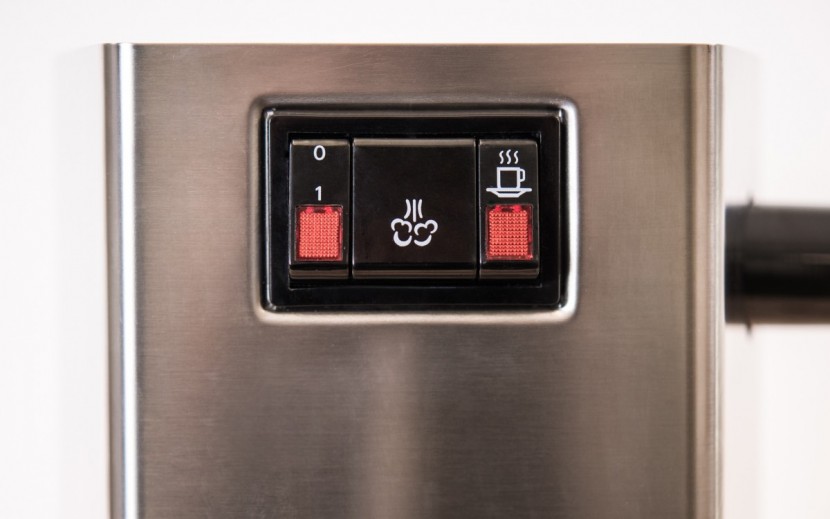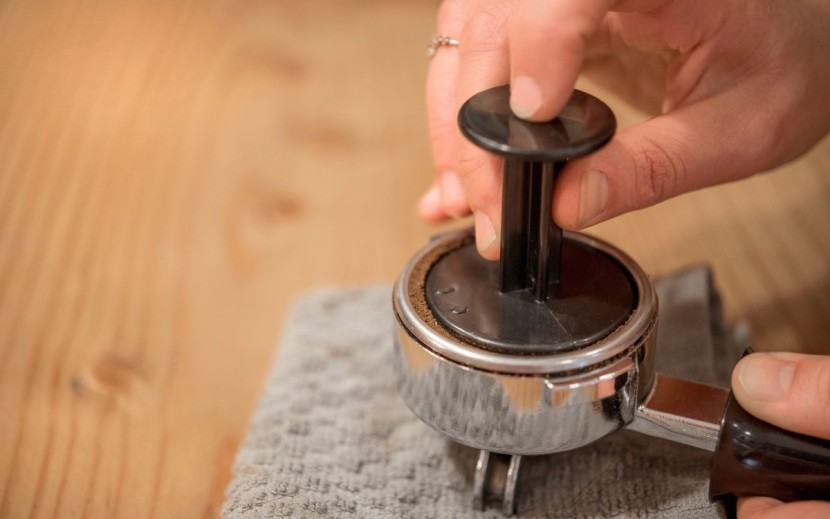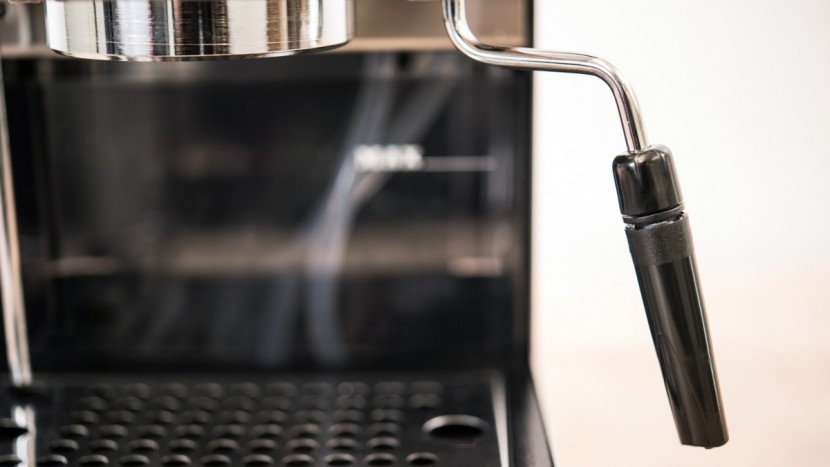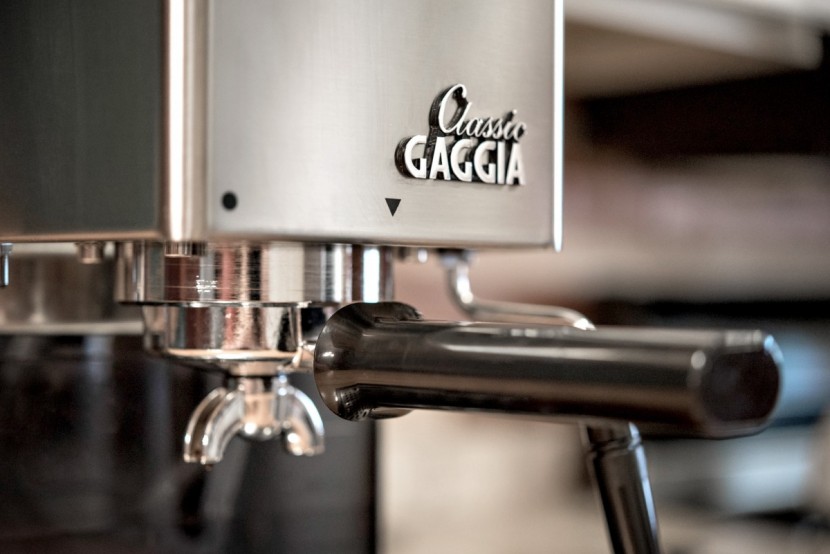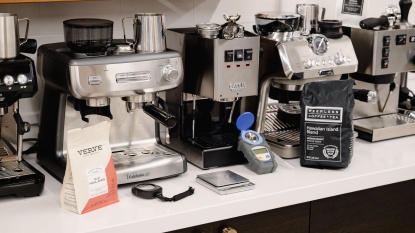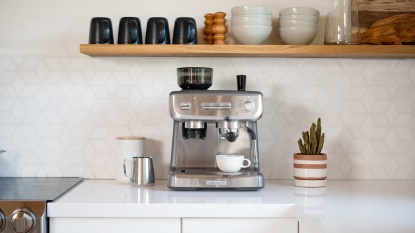Gaggia Classic Review

Our Verdict
Our Analysis and Test Results
The Gaggia Classic failed to impress in our testing. a decent tasting espresso shot couldn't make up for messy operation, poor milk steaming, and odd controls. If you're shopping in this price range the Breville Duo Temp Pro offers much better performance, and usually sells for less.
The Gaggia Classic's poor performances in our cleaning, user friendliness, and milk steaming tests resulted in a very low overall score. You can read the specifics in the sections below.
Taste
This is the only area where the Classic received an above average score, with its decently full and flavorful espresso shots earning it a 6 out of 10. The machine gets quite good pressure to the head, resulting in a well-extracted shot. In the scheme of things, we would place the taste quality of the Classic's espresso as much less bold and creamy than that of the top-scoring Breville machines, but also much bolder than those from the Nespresso capsule machines.
Where the Classic really struggled when it came to taste was with milk drinks. The steam wand just can't get that creamy microfoam. It just makes essentially heated milk, or very fluffy, dry foam, and nothing in between. This is ok if you like very dry cappuccinos, but latte lovers are definitely going to be disappointed. Compared to the cafe quality drinks the similarly priced Breville Duo Temp Pro can make, the Classic felt quite lackluster.
One advantage of the Classic is that its boiler creates enough pressure to both pull a shot and steam milk simultaneously. This negates the risk of the espresso getting oxidized and bitter while waiting for the milk to be poured in. However, even with machines that force you to pull a shot, and then steam the milk, this problem can be alleviated by adding just a dash of cold milk to the shot to hold its flavor. So while this is a nice feature, it's not a huge selling point in the scheme of things.
Ease of Use
The Gaggia Classic picked up a 4 out of 10 in our user friendliness testing, one of the worst scores we awarded to any machine. ITs problems started with the control panel, which is just a spartan on/off switch, steam wand switch, and espresso switch. There is also a knob on the side of the machine for adjusting the flow of steam through the wand. This is simple enough, but even after using the machine a few times we found ourselves instinctively turning the steam wand knob before flicking the steam wand switch. Sure, this isn't a huge deal, but it just didn't feel intuitive to us.
In line with the small control panel, the Classic doesn't provide any sort of pressure gauge or other feedback to the user. For experienced baristas, this is fine, but beginners will likely appreciate the feedback. This is especially true for the Classic, because even when used correctly, it tends to squirt a lot of extra water through the head, making a bit of a mess. A beginner would likely conclude that they did something wrong when we found (with the help of a professional barista) that this was actually a design flaw of the machine. The included tamp is also slightly smaller than the portafilter, which makes it easy to spill grinds and harder to get a good, even tamp.
That's not to say some things about the Classic aren't easy to use. The water tank is very easy to fill, and initial setup doesn't take much effort or time, but that's about it.
No semi-automatic machine is going to be particularly easy to use; all are going to come with a bit of a learning curve for beginners. However, we found the Classic to be more difficult and less intuitive than the Breville and even Rancillio semi-automatic machines we tested. Both of these brands offer better results with less mess and fuss.
Ease of Cleaning
The problem isn't that the Classic is particularly hard to clean, it's that it tends to create more messes and thus requires more cleaning than other machines. This earned it a mediocre score of 5 out of 10.
Short Term Cleaning
This is where the Classic really packs on the workload. We found that its brew head tends to spit out extra water at the end of the brewing process, creating lots of dripping and spilling when you remove the portafilter to get rid of the spent grinds. The Steam wand is also too long to fit over the drip tray, meaning when you're done steaming milk, the excess drips onto your counter instead. Finally, the drip tray is very shallow and doesn't do such a good job at keeping drips from splashing around. All this equates into much more wiping down after making a cappuccino than is required by most machines.
For comparison, we were able to pull shots and steam milk from the similarly priced Breville Duo Temp Pro and the only cleanup required was knocking the spent grinds out of the portafilter and wiping down the steam wand itself. All of the other mess was contained to the drip tray, which has enough capacity to not require frequent trips to the sink.
Long Term Cleaning
Annoyingly, the Classic doesn't include any descaling solution, so you'll have to buy some on your own. The descaling process ended up taking us about 40 minutes and was fairly labor intensive, requiring lots of refills to the water tank. Most machines took more like 20 minutes ot descale, and often required little hands-on attention during that process.
Milk Steaming
The Classic's steam wand is one of our least favorites. It is only really capable of heating milk, or aerating the heck out of it. That means your options are limited to hot milk, or very dry foam. That luscious microfoam that gives cafe quality drinks their amazing texture was impossible to create with the steam wand, even when we tagged in a professional barista with over a decade of experience. This is an especially glaring flaw when you consider that the Breville Duo Temp Pro, which generally sells for less, can create cafe-quality microfoam.
Value
In our testing, the Classic really didn't live up to its $400 list price. For that much, you can get the Breville Duo Temp, which makes cafe-quality drinks. For $50 mor,e you could also get the superautomatic Gaggia Brera, which grinds, tamps, and brews for you, and has a better steam wand. Also, remember that the *Classic does not have a built-in grinder, so you'll have to factor that into your cost calculation.
Conclusion
The Gaggia Classic makes decent espresso, but that's about all the good things we can say. Other than that, it is messy, difficult to use, and doesn't steam milk very well, nor does it have a built-in grinder. It is far from the best choice in this price range.


